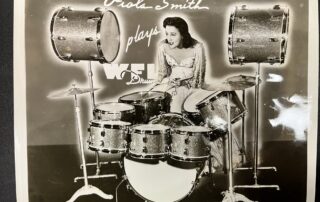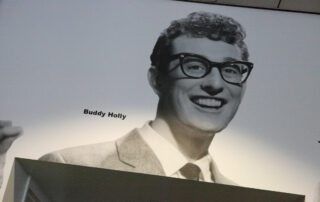“My name is Bedobin, my clan is Bear and I am artist Rory Erler Wakemup.”
Art is a process for Wakemup. He was raised in Minnesota but moved to Wisconsin to get a master’s degree in fine arts. When it comes to art, Wakemup would say, “I kind of fell into it and it has been dragging me along ever since.”
At times he will admit he’s a reluctant artist. It’s a hate, hate, love relationship in Wakemup’s eyes.
Observe him in the University of Wisconsin Art Studios and you will find grit and determination. A chaotic mess Wakemup will turn into his vision. Ask him to describe his art and with a laugh he’ll say, “Pretty looking garbage. I like dumpster diving.”
His self-proclaimed garbage art is guided by the sounds of ancient voices. In the studio, you will hear Native American chants and music inspiring his work.
Rory Erler Wakemup heard a calling in that music to wake-up the masses with a political art project. Wakemup said, “Like literally, wake people up that Natives can do real conceptual art. It started with making a headdress. I was like hey glass feathers let’s make a million.”
Wakemup said he wanted to make pop kitschy art and put an Indian twist on it. He describes his neon and glass chief’s headdress as his spin on the nickel store wooden Indian. Both are designed to attract attention and his headdress does exactly that. By using neon Wakemup attracts an audience to his artwork and to one piece in particular. He designed what he calls a neon wall with shards of mirrors and countless, colorful, neon tubes illuminating his backdrop.
Wakemup describes it like this: “I just want people to see the beauty of it. Just those infinite reflections that go off, and I want them to see it with their own eyes. To watch it move when you move, it reacts to movement.”
Wakemup said he can probably sit and look at that neon wall longer than he can look at a TV without doing something else.
That neon wall became a part of his final graduate school project. The Madison campus is built on and around Native American mounds and that too would get incorporated into his master plan. Wakemup explains it this way, “The UW campus is on hundreds, if not closer to a thousand mounds. I saw all these buildings interrupting the spiritual space. So I decided in the space of the museum to build a mound that would intrude into the space of the room, as if the building were built on a mound.”
Wakemup drew on his spiritual side to make the cloth mound. “From the time we are born we are in that world that spirit world. Our whole life we try to get back to that balance, mentally, physically, and spiritually. The mounds are part of my brain. The mounds have always been there,” he said.
Then, the project just snowballed and Wakemup said that often happens.
“I just daydream. If I could do anything, what would I do?” he said
His daydreaming sparked a creation that is a cross between a warrior chief, Darth Vader and a knight in shining armor. Darth Chief was born.
Darth Chief became Wakemup’s self-proclaimed alter ego which he would use in a political battle, taking on the controversy of Indian mascots and logos. At first Wakemup didn’t see the big deal.
“Initially, I just thought it was such a trivial issue. Why do we care about logos when we’re still trying to deal with the aftermath of boarding schools and genocide? Like I didn’t get it,” he said.
Wakemup’s referring to a statement by Colonel Richard Henry Pratt more than 125 years ago. Pratt was the man who came up with the idea to assimilate Native Americans in boarding schools by wiping out their Indian identity.
Wakemup said, “Col. Henry Pratt, first publically used, ‘kill the Indian, save the man.’ That would have been around 1890 and it followed the governments thinking that ‘the only good Indian is a dead Indian.’ But ‘kill the Indian, save the man’ had a slightly different twist. Basically, what Pratt was saying was kill the native culture in the Indian but save the man by converting him to white man’s ways.”
Wakemup said, “I’m kind of surprised how many Native Americans in my family, hadn’t heard the phrase before, ‘kill the Indian, save the man.'”
With that tragedy as the backdrop for his inspiration Wakemup said, “Kill the Idiot, Save the Fan” just popped into his head. According to Wakemup reaction has been positive, “Most people think it is pretty clever, they like it and get into the Darth Chief body armor on stage fighting racist mascots. It is definitely one of my crazy twists on it. I definitely have screws loose.”
Darth Chief’s Star Wars inspired regalia got Wakemup noticed. In 2015, he won the Chazen Prize.
He said, “It’s a bonafied accolade, one of those badges I’m gonna put on my war shirt.”
The Chazen Prize is awarded to an outstanding student in the Master of Fine Arts Program at the University of Wisconsin.
It couldn’t have come at a better time for Wakemup. He said he was “ready to quit after last year, done, burnt out.”
But Wakemup ultimately stayed in and winning the Chazen Prize guaranteed him a showing at one of Wisconsin’s most prominent art museums. By opening night, Wakemup was a celebrity and the center of attention.
Then, came the unveiling of his alter-ego, Darth Chief. He describes it as his “Madison piece” because it was born and raised here. Wakemup would wear his alter ego one more time for the May 2015 University of Wisconsin graduation ceremony.
He said, “I am excited to wear this for commencement. Everyone who knows about the project, knows I’m going to wear it. I like that wow factor in a lot of my work I guess.”
When we started our conversation with Wakemup he described his art as pretty garbage. After following him for several months through the process of creating his final project he would come to describe his art this way.
“My work is art therapy when you boil it down or whatever that chaos is of where my brain is or isn’t in spirit world. Soothes my soul I guess. It’s been dragging me along for so long I guess I’ll just let it drag me to wherever it ends up,” he said.










